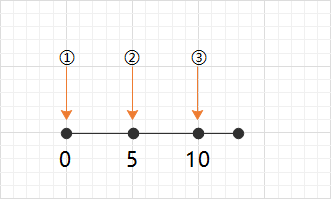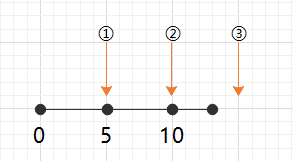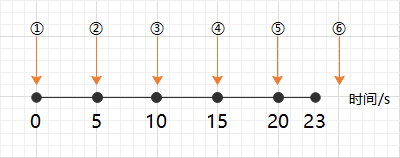JS事件节流(Throttle)
更新日期:
节流
上一节我们一起实现了《JS事件防抖(Debounce)》,本节来实现一下JS事件的节流(Throttle)。
初始代码
本节我们继续延用上一节的初始代码,不过为了更加清楚的看到事件的调用次数,我们添加了一个times参数显示到页面上。
|
|
输出如下图,每输入一个字符,都会触发ajax方法:

原理
节流的原理就是:如果持续触发一个事件,在一定的时间内,只会执行一次。
举例
打游戏时,技能的冷却:如果按一下技能键,则技能触发,但是在冷却时间内,即使按了多次该技能键,还是不会触发这个技能,直到技能冷却时间过去,继续按键才可以释放技能。
实现
根据事件首次是否执行和结束后是否执行最后一次事件,我们有两种实现方式。
- 时间戳方式
- 定时器方式
时间戳方式
即设置时间戳,当触发事件时,取出当前时间戳,然后减去之前的时间戳,如果时间间隔超出了设定的时间,那就执行函数,并且把时间戳更新为当前的时间戳。如果没有超出设定的时间范围,则不执行事件。
|
|
输出结果如下:

大家可能会纳闷,为什么最后面的三个字符没有触发函数的执行?请看下图:

横轴代表随着时间的变化,输入框的输入字符事件一直在触发,但是该事件对应的回调函数却只在触发过程中每隔5秒调用,并且如果在5秒后还有事件的触发,才会重新执行。如果5秒内即使有事件的输入,回调函数还是不会触发。即,事件对应的回调函数首次执行,结束后不执行。
定时器方式
当触发事件的时候,我们可以设置一个定时器,再触发事件的时候,如果这个定时器存在,则不执行函数。直到定时器被清空,才重新设置定时器,并在函数执行完成后,清空该定时器,这样我们就可以设置下一个定时器。
|
|
输出结果如下:

与时间戳方式不同的,就是该事件不会立即执行,而是会等待几秒,然后才会执行,在输入事件停止输入后,还会执行一次,如下图:

对比
对比上面这两种方式可以发现,他们各有优缺点:
- 时间戳方式,第一次事件会立刻触发函数执行;定时器方式的第一次事件在n秒后才会第一次执行
- 时间戳方式,事件停止触发后无法再执行函数;定时器方式在事件停止触发后,依然会执行一次函数。
所以,我们就需要想办法进行优化,结合两种方式的优点。
优化
我们需要在事件刚开始的时候立刻触发函数,然后继续触发过程中函数每隔n秒正常执行,然后在事件停止触发后还会再执行一次函数。所以我们改进一下上面的代码,将两者的优点进行合并。
|
|
此时,事件的执行次数如下图所示:

到了这里,其实我们的代码已经是比较完整的了,不过我们还希望更加方便易用,比如有时候希望刚开始时不触发,或者结束后不触发,所以可以把上面的代码再优化一下。
添加可配置项
通过添加一个option参数配置,来设定事件的触发。
|
|
这里需要注意一下,leading: false和trailing: false 不能同时设置。因为如果trailing设置了false,那么停止触发后,就不会设置定时器,所以只要过了设置的时间,然后再重新开始执行的时候,就会立刻执行了,违反了leading: false,这样其实是有bug存在的,所以这两种事件逻辑不可以同时设置。
|
|
添加取消
再进行优化一下,类似于上一节的防抖(Debounce),如果设置的时间间隔太长,可能会影响用户体验,所以我们添加一个取消的方法,让用户可以根据需要取消节流。
|
|
至此,我们已经完整的实现了事件的节流(Throttle)功能。
总结
完整代码敬上!
|
|
感谢收看,本章完!
